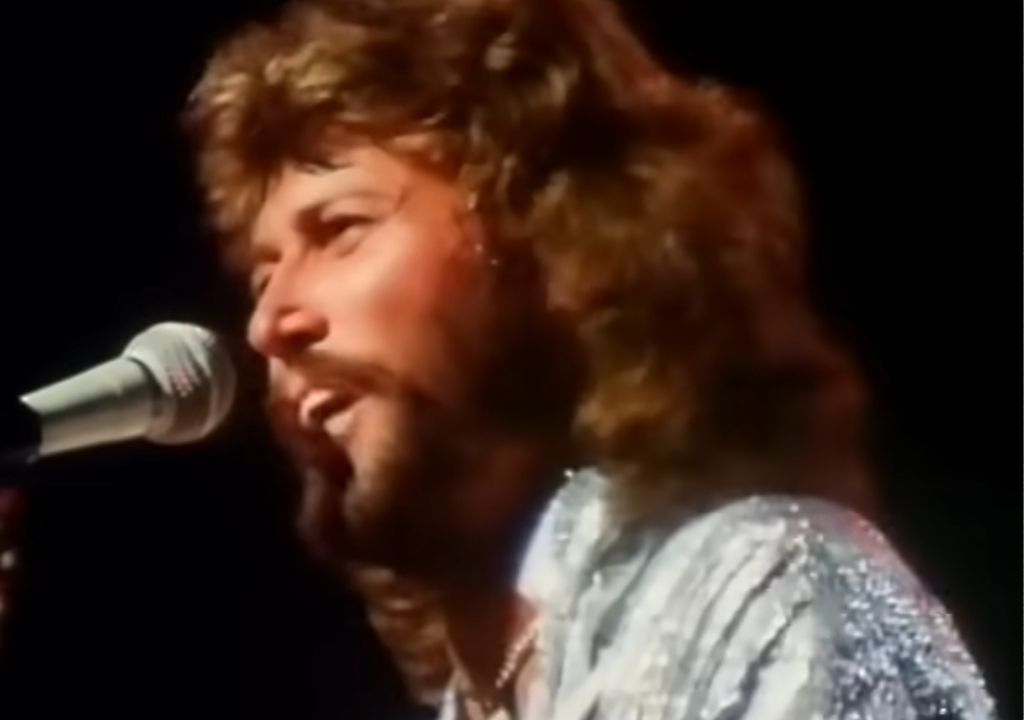
When reflecting on the legendary career of the Bee Gees, one cannot ignore the dramatic transformation that marked their journey from the dreamy, psychedelic pop of the 1960s to the disco-dominated late 1970s. This incredible shift was neither gradual nor accidental but a bold, deliberate gamble that propelled them to unparalleled global superstardom. At the heart of this radical reinvention lies the iconic track “You Should Be Dancing,” a song that reignited their fading career and defined an entire musical era.
Released in the pivotal year of 1976, “You Should Be Dancing” emerged as the lead single from their album Children of the World. The song was born during the Bee Gees’ immersive experience in Miami’s vibrant R&B and funk scene—a fertile ground for fresh creative energy. Following the disappointing commercial response to their earlier 1970s work, the Gibb brothers collaborated with producer Arif Mardin to embrace a fiercely dance-oriented sound, a decision that would dramatically alter their legacy.
Musically, the track is a masterclass in disco, spotlighting the genre’s hallmark four-on-the-floor beat, syncopated basslines, and lavish orchestration. Yet, what truly set this song apart was Barry Gibb’s innovative falsetto vocals, which were not just an accent but the very heartbeat of the track—something unprecedented for a major hit at the time. This soaring, soulful falsetto became the Bee Gees’ new signature, perfectly meshing with the driving, irresistible rhythm that forced listeners worldwide to the dance floor.
The impact of “You Should Be Dancing” was nothing short of historic. It did not merely top charts; it dominated multiple categories with overwhelming popular appeal. It clinched the number one spot on the American Billboard Hot 100, becoming their third US chart-topper. More impressively, it ruled the US Hot Dance Club Play chart for an astounding seven weeks, a testament to its dance floor magnetism. Its success spilled over into the Billboard R&B chart, where it reached number four, thanks to its funky, soulful roots. Internationally, it soared to number five on the UK’s Singles Chart and conquered the Canadian charts as well. Ranked as the 31st biggest hit of 1976 on the Hot 100, this track’s triumph was a resounding proof of the Bee Gees’ spectacular reinvention.
Beyond the record-breaking numbers, the cultural imprint of “You Should Be Dancing” is indelible. Released a year before its famous inclusion in the seminal Saturday Night Fever soundtrack, it became an eternal disco anthem. Its raw, energetic groove epitomized the film’s gritty portrayal of disco culture and captured the rebellious spirit of the dance movement. This song wasn’t just a hit—it became a cultural phenomenon that reshaped public perception of the Bee Gees from nostalgic pop artists to pioneering discotheque trailblazers. Without this daring sonic pivot, it’s hard to imagine the astronomical success of the Saturday Night Fever soundtrack and the Bee Gees’ subsequent reign in the music world.
According to Barry Gibb, “We knew we had to reinvent ourselves or risk being forgotten. ‘You Should Be Dancing’ was our message to the world – we were back, stronger and bolder than ever.” This statement echoes the band’s fearless embrace of change that electrified a generation and forever locked their name to the glamour, excitement, and revolutionary pulse of disco.
In the end, “You Should Be Dancing” stands as not just a song, but a monumental turning point in music history—a vivid declaration of transformation, courage, and timeless appeal that continues to make the Bee Gees icons of an unforgettable era.
